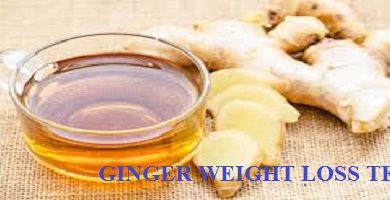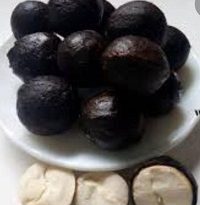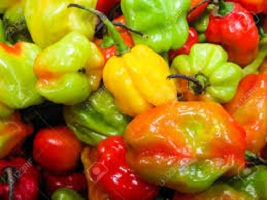Health Benefits of Mahogany Tree Bark
Health Benefits of Mahogany Tree Bark
Swietenia macrophylla is a species of plant in the Meliaceae (Mahogany family), sometimes known as the mahogany, Honduran mahogany, or big-leaf mahogany.
Belize, Bolivia, Brazil, Colombia, Costa Rica, Ecuador, El Salvador, Guatemala, Honduras, Mexico, Nicaragua, Panama, Peru, and Venezuela are the countries where the plant is indigenous.
But it is almost extinct in Ecuador, Colombia, Panama, and Costa Rica; on the verge of extinction commercially in Bolivia; decreasing in Mexico, Belize, and Brazil; and drastically declining in Guatemala, Peru, Nicaragua, and Honduras.

Mostly throughout Southern Asia and the Pacific, including India, Indonesia, the Philippines, and Sri Lanka, the species has been widely planted. West Africa has also been exposed to it.
American mahogany, Baywood, Bigleaf mahogany, Broadleaf mahogany, Honduran mahogany, Mahogany, Large-leaved mahogany, Honduran mahogany, Brazilian mahogany, West Indian mahogany, Large-leaved Mahogany, and New World Mahogany are some of the most well-known common names for the plants.
Table of Contents
Medicinal Uses of Mahogany Bark
There have been several reports of this plant’s medical properties. Diarrhea and fever may be treated with bark. The tree is not grown for food since there are no edible parts of the plant.
In addition, it is used in forestry initiatives and as a shade tree for plantation crops. As a potting medium, crushed fruit shells are used. Gums produced by bark are used to color and tan leather.
Oil produced from seed kernels is very bitter and purgative. High-end woodwork and furniture, musical instruments, veneer, and other products are prized.
Health Benefits Mahogany Bark
- Control Blood Sugar
- Boost Fertility
- Improves Heart Health
- Hypertension
- Boosts Immune System
- Cures Fever and Malaria
- Increases Appetite
- Wound-Healing Abilities
- Insect repellent
- Treat Constipation
- Menstrual Pain
- Make Women Fertile
- Cure Fever and Cold
- Eczema and Rheumatism
Plant Characteristics
Honduran mahogany is a stunning, quickly growing, tropical tree that can tolerate shade and is either permanently evergreen or momentarily deciduous.
The plant typically reaches a height of 30 to 40 meters, yet under the right circumstances, specimens may reach 60 meters tall.
Leaves
Usually paripinnate but sometimes imparipinnate, the leaves are 12-45 cm long and include 3-6 pairs of elliptical or oval-lance-shaped leaflets.
The asymmetric leaflets are 5–12 cm long, 2–5 cm broad, and have a pointed or long pointed tip. An even number of leaflets are joined by a central midrib.
Young leaves are pink or scarlet, and as they age, they progressively become dark green.
Flowers
The tree produces tiny, fragrant, white, unisexual flowers that range in size from 0.5 to 1.0 cm and are carried in inflorescences known as panicles that include both male and female flowers.
Fruit with five lobes, an oblong or oval shape, measuring 11.6-38.7 cm in length, 6.7-12.0 cm in diameter, and having four to five valves follows fertile flowers.
Inner valves are substantially thinner than the woody, 5-7 mm thick outer valves. A woody, five-angled columella that extends to the apex is present in the middle.
When the fruits are mature and dried, they break open from the apex or base. There are 22–71 produced seeds in each fruit.
Seeds
Brown, compressed, crested, samaroid seeds that are 7–12 cm long and 2-2.5 cm broad, including the wing, are oblong, thick at the base, and brown.
Wood
Mahogany wood is sturdy and is used to make cabinets, plywood, fine furniture, and building materials.
Additionally, it may be used for flooring, paneling, framing, car bodywork, boat interior trim, radio and phonograph cabinets, musical instrument bodies, moldings, and other decorations.
Bark
The incredible health advantages of mahogany trees Mahogany bark has nine powerful health advantages.
About Mahogany Tree Bark
The tree’s outermost layer, which covers the stem, is called the bark. Many times, the bark of certain trees, like mahogany, is prepared as a herb.
The bark is cooked to do that, sometimes in a mixture with additional plants. Alkaloids, saponins, and flavonoids are abundant in the tree. Additionally, it contains a lot of vitamins and minerals.
All of this implies that it has certain physiological impacts, some of which we will examine today. The bark of mahogany may provide the following health advantages.
- May Increase Fertility
The bark of the mahogany tree and other mahogany tree parts have been used locally to cure male and female infertility.
It has been claimed that since it enhances erection, it may treat impotence or erectile dysfunction in males. It raises a woman’s likelihood of becoming pregnant. To support this assertion, however, there is still a dearth of scientific data.
- Treats Malaria and Fever
Fever and malaria have also been treated locally using mahogany bark. Simply boil the bark in water and consume it while it’s still warm or hot.
According to one research, mahogany may have antimalarial benefits.
- Could Regulate Blood Sugar
Another method for regulating blood sugar is by drinking mahogany bark extract. This is because saponin, a natural diabetes treatment, is present.
In a 2010 research, rats with diabetes caused by alloxan were used to examine the hypoglycemic impact of mahogany bark extracts.
According to the research, a mahogany bark extract that shows a considerable hypoglycemic effect may one day be utilized to create herbal treatments for diabetes mellitus.
- Enhances Heart Health
The bark of mahogany is also beneficial for the heart.
The bark’s flavonoid concentration lowers the risk of heart illnesses as well as the accumulation of unhealthy fats and cholesterol in the blood.
Additionally, flavonoids enhance the cardiovascular system and blood flow.
- Decreases Hypertension Risks
Consuming mahogany bark extract lowers the chance of developing hypertension by lowering blood pressure.
- Increases Immune System Strength
Flavonoids are also thought of as antioxidants, which aid in the body’s defense against free radicals. By infecting cells, free radicals may destroy living things.
In certain circumstances, this results in cancer. Additionally strengthening the immune system and facilitating the body’s ability to combat sickness and infection are antioxidants.
- Stimulates the Appetite
Drinking mahogany bark extract may also aid in boosting hunger. For people who are recuperating from a fever or malaria, this may be quite beneficial.
Therefore, consuming mahogany bark will not only help one recover from the disease but also restore their appetite.
- Antioxidant Properties
To ascertain the phytochemical elements and antioxidant activities of the stem bark of African Mahogany (Khaya senegalensis), one medical review was conducted.
The analysis revealed that several of the phytochemicals in mahogany bark, including saponin, tannin, alkaloid, cardiac glycoside, flavonoids, and phlorotannin, may be the cause of the bark’s therapeutic effects.
As a result, the bark may be regarded to possess antioxidant qualities and may thus be used in the management of oxidative stress. Even the possibility of using mahogany bark to treat colon cancer was mentioned in a medical paper.
- Possibility of Healing Wounds
Mahogany bark’s capacity to heal wounds is only one of the numerous advantages it has for your health.
This was confirmed by research that was published in the Journal of Medicinal Plants Research in 2020. Additionally, the researchers noted that the bark possessed antimicrobial qualities.
What conditions does mahogany treat?
African mahogany is used as a laxative, analgesic, antihaemorrhagic, febrifuge, aphrodisiac, emmenagogue, and emetic in traditional medicine.
Additionally, it is used in regional medicine to treat intestinal issues and to ease general discomfort. Fish poison is made from this tree’s bark.
Health Benefits of Mahogany ~ What advantages do mahogany seeds have?
macrophylla) plant, sometimes referred to as the mahogany tree, maybe the next big thing in the worldwide cosmeceutical market.
A study found that the seeds include naturally occurring phytocompounds that are wound healing, skin whitening, anti-inflammatory, antioxidant, and antibacterial
Health Benefits of Mahogany ~ What are the benefits of mahogany seeds?
Additionally, mahogany leaves have antibacterial and antifungal qualities that may aid in the prevention of infections and illnesses.
Additionally useful for rearing fish fry and breeding fish are mahogany leaves. The leaves may encourage spawning and provide eggs and young fish with a secure habitat.
What is the side effect of mahogany?
If you feel poorly or experience any of the following signs and symptoms of liver damage after consuming mahogany seeds: nausea (feel like vomiting), lack of appetite, tiredness, dark urine, yellowing of the eyes or skin (jaundice), or nausea.
Is mahogany good for the liver?
The patient may suffer deadly liver damage from mahogany seeds or their extract.
It is best to discourage the unrestricted use of such products without sufficient clinical trials, research, and safety oversight.
How does mahogany affect blood pressure?
Antioxidants included in mahogany seed extract help reduce blood pressure.
The amounts of NO may be used to prove this impact. This extract thus has the potential to be turned into a vasodilator.
What makes mahogany so unique?
The wood of mahogany is strong and resistant to termites, moisture, and temperature fluctuations.
Workability;
Mahogany works well with hand and power tools, sandpaper, glue, dyes, and finishes. It also twists well.
Is mahogany at danger?
Listed as vulnerable by the International Union for Conservation of Nature, mahogany is an endangered wood.
The population of natural environment mahogany has decreased by 30% over the last 30 years as a result of unrestricted harvesting and illicit logging.
Does mahogany help with ulcers?
The mahogany seed extract was discovered to have a possible impact on the healing of stomach ulcers at the levels used in this investigation.
The phospholipid and long chain unsaturated fatty acid content of mahogany seeds is thought to be responsible for this effect.

How long does mahogany take?
It takes 25 years for mahogany trees to achieve full maturity.
These trees are quite prevalent in southern coastal locations because they grow well in damp soil and salty air.
To develop to their maximum potential, they need full or just partial sunshine, as well as consistent hydration.
What makes mahogany special?
Mahogany is less prone to twisting, swelling, warping, and shrinking than other types of wood.
This is due to its peculiar resilience to moisture and fluctuations in the atmosphere.
Mahogany maintains its form and doesn’t budge. Large chunks of mahogany are very transparent due to the size of the mahogany tree.
Benefits of mahogany for skin ~ Mahogany benefits for skin
That’s a bark extract from an African mahogany tree. This organic substance, also referred to as Khaya senegalensis bark extract, increases skin suppleness, lessens fine lines and wrinkles, and unclogs pores.
What conditions does mahogany treat? What is the name of the mahogany herbal remedy?
– Bark extracts are used as an astringent for wounds in India. – Effective against dysentery, fever, diarrhea, anemia, and malaria.
– Wood: Producing the highly sought-after reddish-brown wood, this is the genuine mahogany of trade. It is highly sought-after as a shade tree in Manila due to its rapid growth.
What advantages does mahogany oil have? What is the benefit of mahogany oil?
Mahogany Teakwood Essential Oil
- Relieving aches and pains in the body.
- Lowering triglyceride levels.
- Improvement of blood circulation;
- Body detoxification.
- Effective healing for dry skin; relief from generalized body aches.
- A soothing impact on sunburns.
What is the medical value of mahogany?
In contrast to manufactured medications, which do not possess both features, plants not only have a hypoglycemic effect but also prevent its consequences.
Mahogany seed (Swietenia macrophylla), one of the plants that fight diabetes, has been used traditionally as medicine in Indonesia and India, but it is most often employed as lumber.10
What advantages can dried mahogany leaves offer? What are the benefits of dried mahogany leaves?
Additionally, mahogany leaves have antibacterial and antifungal qualities that may aid in the prevention of infections and illnesses.
Additionally useful for rearing fish fry and breeding fish are mahogany leaves. The leaves may encourage spawning and provide eggs and young fish with a secure habitat.
Benefits and side effects of Mahogany
- Hypertension
- Maintaining sugar levels
- An insect repellant
Treatment for Constipation
Additionally, mahogany seeds may be utilized to treat constipation. To cure constipation, consume this fruit (mashed) and combine it with warm water.
- Menstrual Pain
Utilizing herbal remedies made from mahogany seeds is one method of reducing menstrual discomfort. Early in the menstrual cycle is the best time to consume mahogany seeds to ease discomfort.
- Increasing Female Fertility
One mahogany a day will supposedly boost your fertility. especially if you want to feel pregnant and you are a lady without children.
- Increase hunger
Mahogany might be a remedy if you often lose your appetite. Just eat 1 seed every day until you start to feel hungry again.
- Treat Colds and Fever
The effectiveness of mahogany seeds may help treat fever and the common cold.
Take 1/4 cup boiling water, 1/2 teaspoon of mahogany powder, and 1 tablespoon of honey. 2-3 times a day, drink while it’s still warm.
- Rheumatism and Eczema
Add one tablespoon of honey and half a teaspoon of mahogany powder to one cup of boiling water. while it’s still warm, sip. Three times a day is plenty.
Mahogany seed’s side effects
Utilizing the prescribed safe amount of consumption is essential to avoid negative effects.
Consuming excessive amounts of saponin might result in gallstones. As steroids, saponins also function. Flavonoids: eat no more than 200 mg of flavonoids daily.
Flavonoids have a more hazardous boomerang effect on the body when consumed in excess.
We haven’t seen any reliable information on the health effects of mahogany seeds for menstruation.
Be cautious while eating the seeds of this mahogany fruit even if there isn’t any study on the mahogany that has embraced this hypothesis at the moment.
Mahogany benefits for hair ~ mahogany Organics Africa
- Strengthens hair follicles to stimulate hair development and glossy hair;
- Adds nutrients and vitamins to the scalp and hair follicles;
- Reduces frizz in the hair;
- Nourishes hair roots and keeps hair smooth and moisturized.
Health Benefits of Mahogany ~ The benefits of mahogany seeds
Crushed S. mahagoni seed water decoction is used to treat a variety of conditions, including high blood pressure, diabetes, constipation, menstrual discomfort, dermatitis, and rheumatism.
It also improves fertility and tastes good while reducing fever and cold symptoms.
Health Benefits of Mahogany ~ Mahogany tree benefits the environment
Mahogany trees emit a sulfur molecule that may lessen the warming of the atmosphere caused by greenhouse gases.
It influences the asphalted roads, reduces soil erosion, and helps to raise groundwater levels. Overall, mahogany makes a significant contribution to the environment as a whole.
How to use mahogany leaves
It is traditionally used as an astringent, bitter tonic, antipyretic, and treatment for diarrhea, hypertension, diabetes, and malaria (Bourdy et al., 2000).
The mahogany seed for pregnancy ~ what are mahogany seeds used for?
Mahogany seed (Swietenia macrophylla), one of the antidiabetic herbs, has been used as traditional medicine in Indonesia and India, but it is more often used as wood for construction.
Benefits of mahogany seed oil ~ Mahogany seed oil benefits
It is a powerful emollient that works well on adult, troubled, parched, dry, itchy skin types.
The oil performs well as a conditioner and moisturizer in hair care treatments.
It strengthens dry, brittle, and damaged hair and helps to revitalize lifeless hair.


